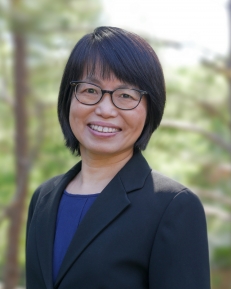
Chunhui Xu, PhD
Chunhui Xu, PhD, is an associate professor of pediatrics at Emory University School of Medicine specializing in cardiogenesis — the study of the development of the embryonic heart. Researchers in her lab turn human pluripotent (immature) stem cells, or hPSCs, into cardiac muscle cells. It’s an innovation that holds hope for disease modeling, drug screening, and regenerative medicine.
March 2020 marked the end of a stellar project: Cardiac cells were shown to be cultivated more efficiently in the microgravity environment of space.
The experiment, devised by Emory professor Chunhui Xu, PhD, in partnership with Kevin Maher, MD, began years ago on Earth, but astronauts aboard NASA’s SpaceX-20 carried out the latest step on the International Space Station (ISS).
Xu, who works in the pediatrics department and at Children’s Healthcare of Atlanta, has long been passionate about improving health outcomes for children. She hopes this research will translate into potential regenerative cell therapy for pediatric patients – saving thousands of young lives in the process.
Turning stem cells into heart cells
Xu’s decades-long career has led to an expertise in stem cells and cardiogenesis, or the study of the embryonic heart. After completing her postdoctoral training at the Burnham Institute in San Diego, CA, she quickly advanced in the new field of human pluripotent, or immature, stem cells (hPSCs) which can be turned into cardiac muscle cells. Following work at Geron Corporation in Menlo Park, CA, Xu joined Emory in 2012.
Of her time on the West Coast, Xu says, “My group developed a culture method to grow hPSCs, which is being widely used, and we were among the first to turn hPSCs into beating heart cells.”
Growing stem cells into beating heart cells has great potential for cell therapy, but there’s a problem of volume: You need one billion cells to repair a damaged heart. Xu and Maher explored more efficient means of producing heart cells from the stem cells, and the inspiration for simulated microgravity struck at an Emory seminar.
Facilitating an easy journey into space
Xu’s journey of sending her work to space began with a funding award and call for proposal from the Center for the Advancement of Science in Space (CASIS, the ISS National Lab).
“I learned about this call for proposal when I attended a seminar that CASIS gave at the School of Medicine,” says Xu. “Had I missed that seminar, I probably would not have thought of linking microgravity with our heart stem cell work.”
Once the researchers exposed stem cells to microgravity in a bioreactor, they were able to produce many more beating heart cells compared to stem cells grown in standard gravity. They soon applied and were accepted as part of the resupply mission of NASA’s SpaceX-20 to the ISS.
To transport the cells safely to space, Xu and her team established a method to cryopreserve the cells.
“This allows better pretesting of the cells before spaceflight, makes it easier to transport the cell culture, reduces the impact of strong gravitational force exerted on the cells during the launch of the spaceflight, and accommodates a more flexible working schedule for the astronauts,” says Xu.
A new frontier for cell therapy
Being cool under pressure is part of what makes Xu a gifted researcher. But for this undertaking, the stakes were particularly high.
“This project is not a typical lab experiment that you can do again if something did not go well,” said Xu. “Essentially, we had only one chance to get the experimental design and execution working. So, before sending the cells to the International Space Station, we spent lots of time performing ground-based testing, including mimicking astronauts’ operation procedures.”
Despite the challenges, it was a successful mission with promising outcomes for the experiment. Finding a way to culture those cells more efficiently in space has been, for Xu and her team, an unforgettable chapter.
“This project provided us with a real space environment to test our hypothesis. We know how rare such an opportunity is and we are very grateful. We are also glad that the novel technologies we developed to successfully complete our experiment can be used in future space experiments,” says Xu.
Aside from professional success, this project has also provided personal pleasure for Xu.
“My family and friends are excited about my work because they think I’m working on one of the coolest things in biology: turning non-heart cells such as skin cells into beating heart cells. Saying that they are ‘super excited’ would be an understatement when they hear that we are doing all these experiments on the International Space Station.”